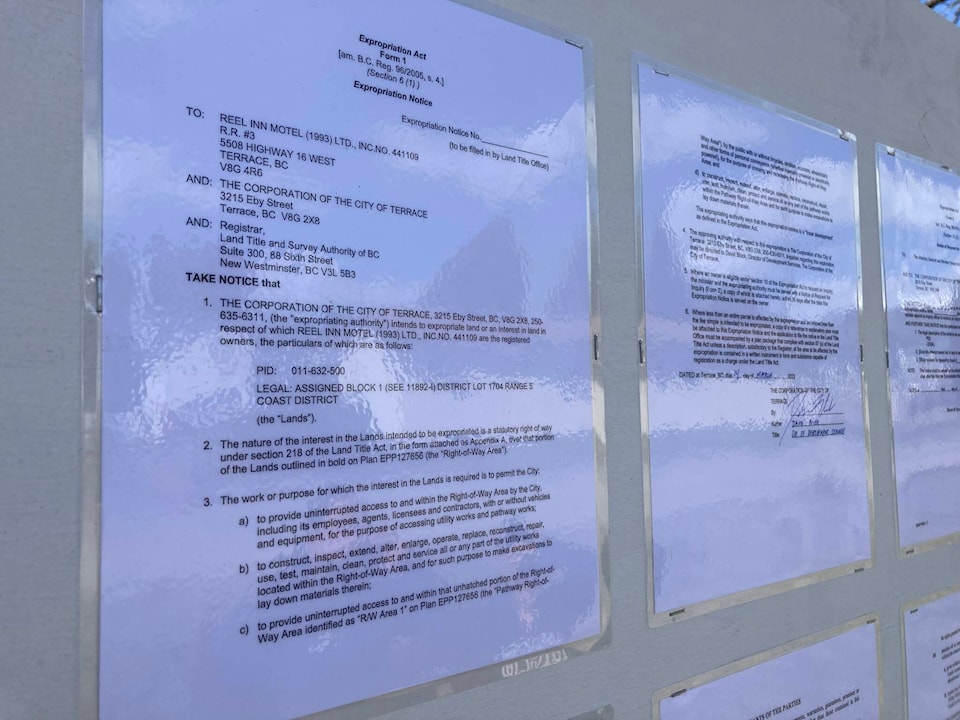The City of Terrace has taken the first step to expropriate land for a corridor through the Kalum Motel property so that it can finish its $1.4 million extension of the Grand Trunk Pathway paralleling Hwy 16 west to the Kalum River Bridge.
Work began on the 1.5 kilometre multi-use path last year without an agreement with the owners of the motel property. Public reports to council from city staffers indicated talks were continuing.
But that ended April 17 when city crews appeared on the motel property, erecting a large billboard to which were affixed 23 pages announcing the city’s intent to expropriate enough land for a pathway corridor. Included were detailed surveys as the amount of land to be taken for the pathway corridor.
The city, as a local government, does have the right to use the tools contained within the provincial expropriation act.
At a frontage of 190 metres, the Kalum Motel property, whose registered owner is Reel Inn Motel (1993) Ltd., represents a substantial portion of the trail extension which begins at the Frank St. intersection of Hwy 16.
Expropriation does not mean confiscation without compensation and the city must provide property owners with an appraisal and that appraisal should represent fair market value as if the land was sold by a willing seller to a willing buyer.
And if land is expropriated, the owner can be compensated for reasonable costs, expenses and financial losses resulting from the effects of the expropriation.
City development services director David Block said the city did present the property owners with a cash offer in 2022 based on an appraisal but that it was rejected. Also rejected were further negotiations with the city, he said.
Before that cash offer, Block said “offers were made including various improvements to their lands in addition to the improvement from the proposed multi-use pathway project.”
Pending the completion of required expropriation steps, Block said the city could have legal access to the pathway corridor by mid-May.
“Completion of the [entire] project is expected to take two to three months and should be finished by the end of August,” he added.
The Kalum Motel property stands out because it is the only piece of private property through which the pathway would travel.
The situation is further complicated because the Kalum Motel property extends right to the edge of Hwy 16.
That’s different from the rest of the pathway route which is being constructed on right-of-way owned by the provincial transportation and infrastructure ministry. That right-of-way acts as a buffer between the highway and adjacent landowners.
The extension, which is called the Skeena River Walk, is the final leg of a years-long project called the Grand Trunk Pathway to construct a pathway from downtown Terrace to the Kalum River Bridge.
City officials last year said the design of the pathway was completed and materials ordered to include the section through the Kalum Motel property.
Construction on either side of the motel property was nearly at the stage for paving and lighting was installed before work stopped late last year with the arrival of winter.
The Kalum Motel property was singled out as far back as 2018 when the city commissioned a feasibility study that provided the groundwork for the project. The study itself was an update of one prepared in 2008.
“Due to property boundaries, there is not a feasible option to avoid this conflict,” the feasibility study stated of a route through the property.
“Based on preliminary engagement of the property owners, alignment through this section was maintained as close as possible to Highway 16 as possible to reduce impact on existing commercial vehicle access.”
